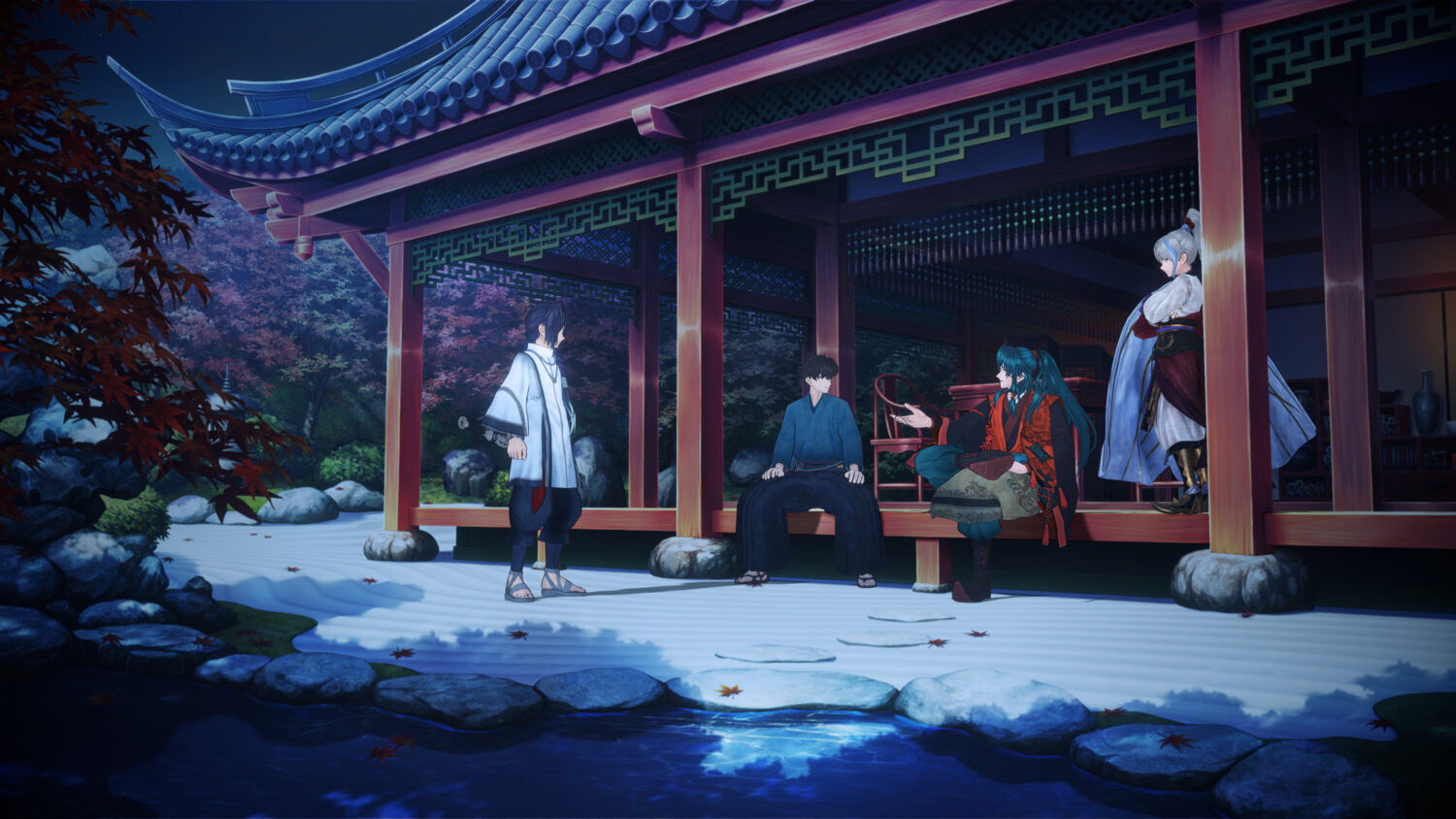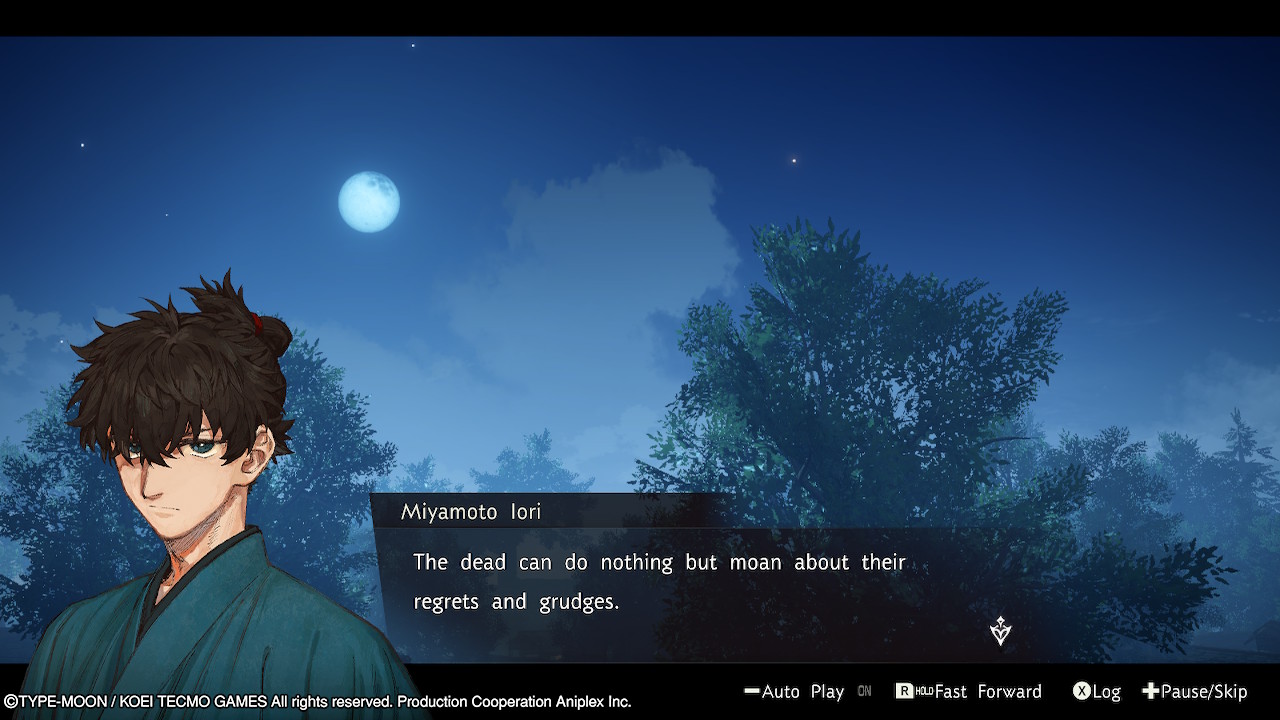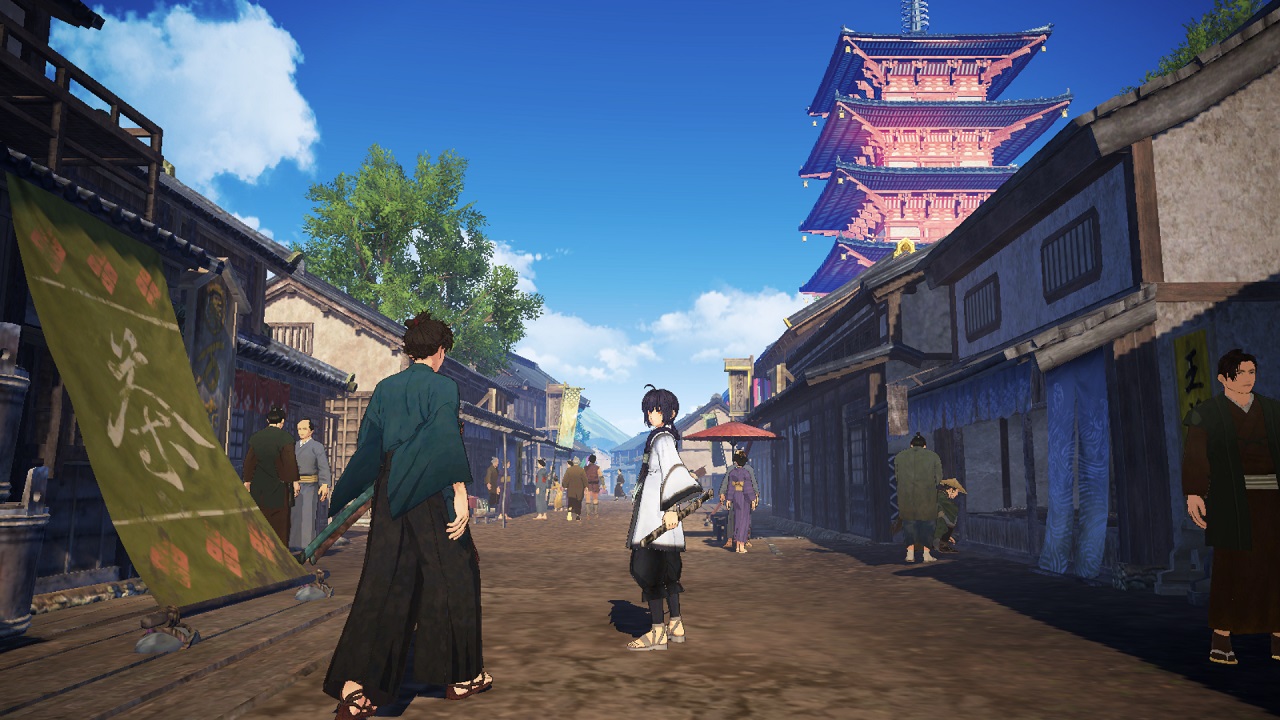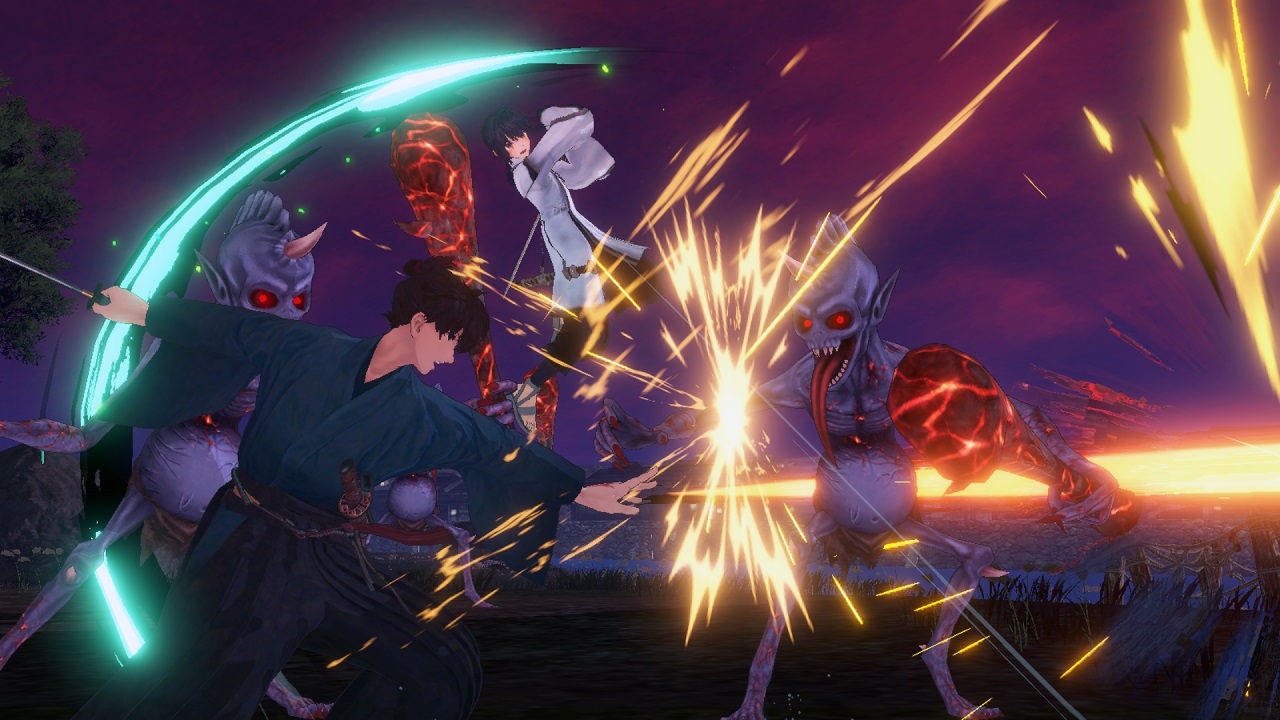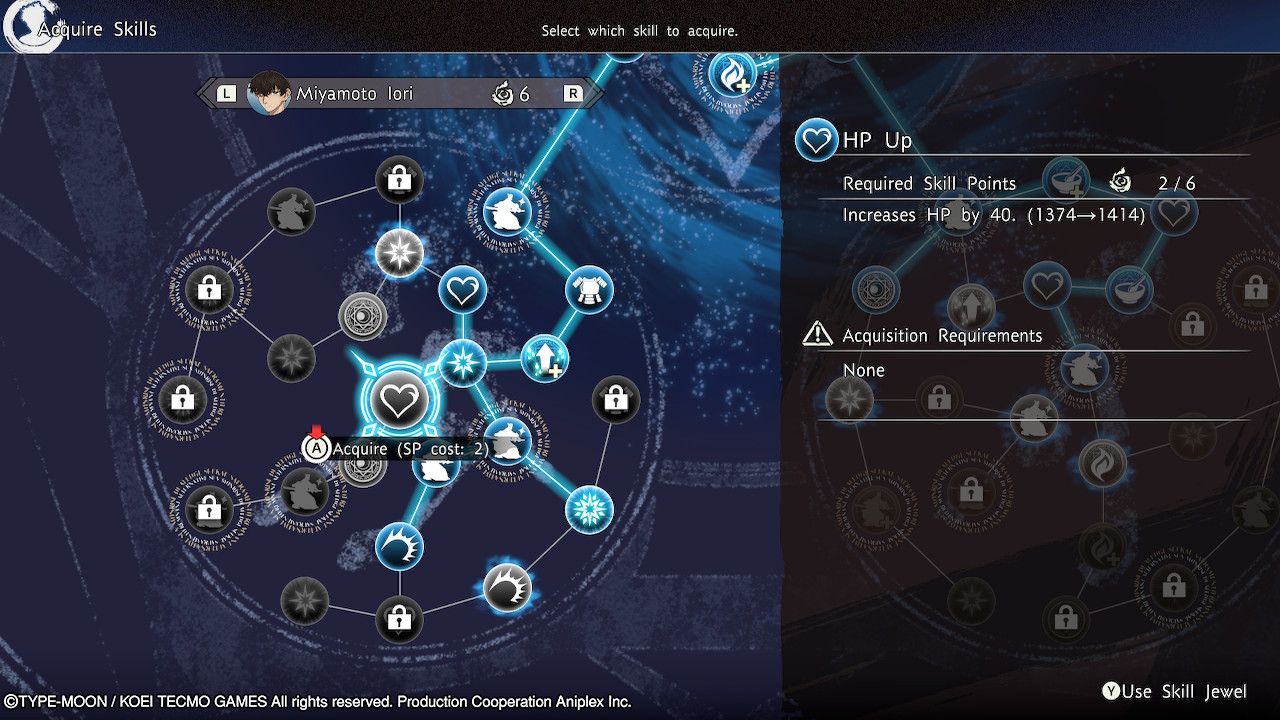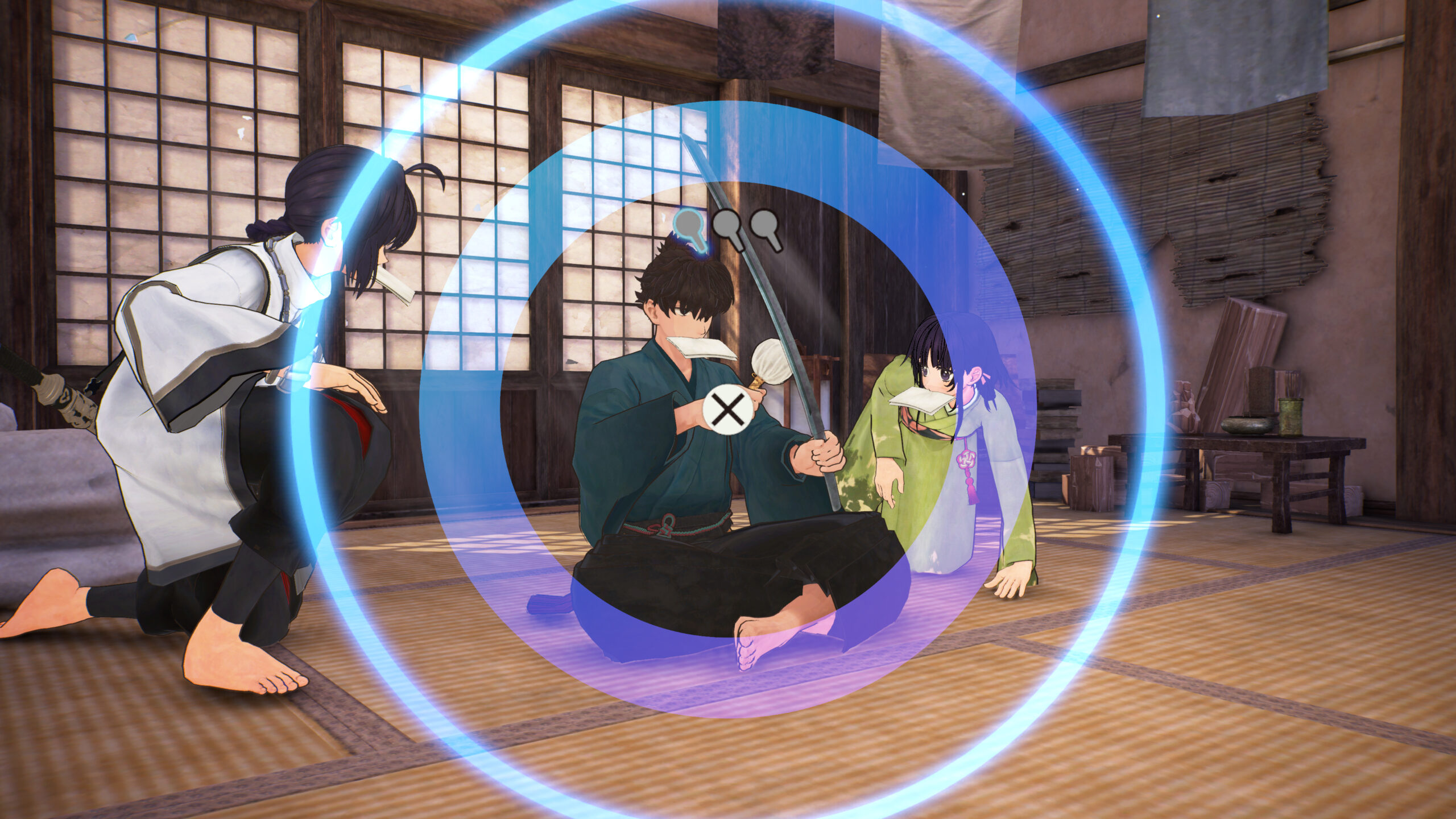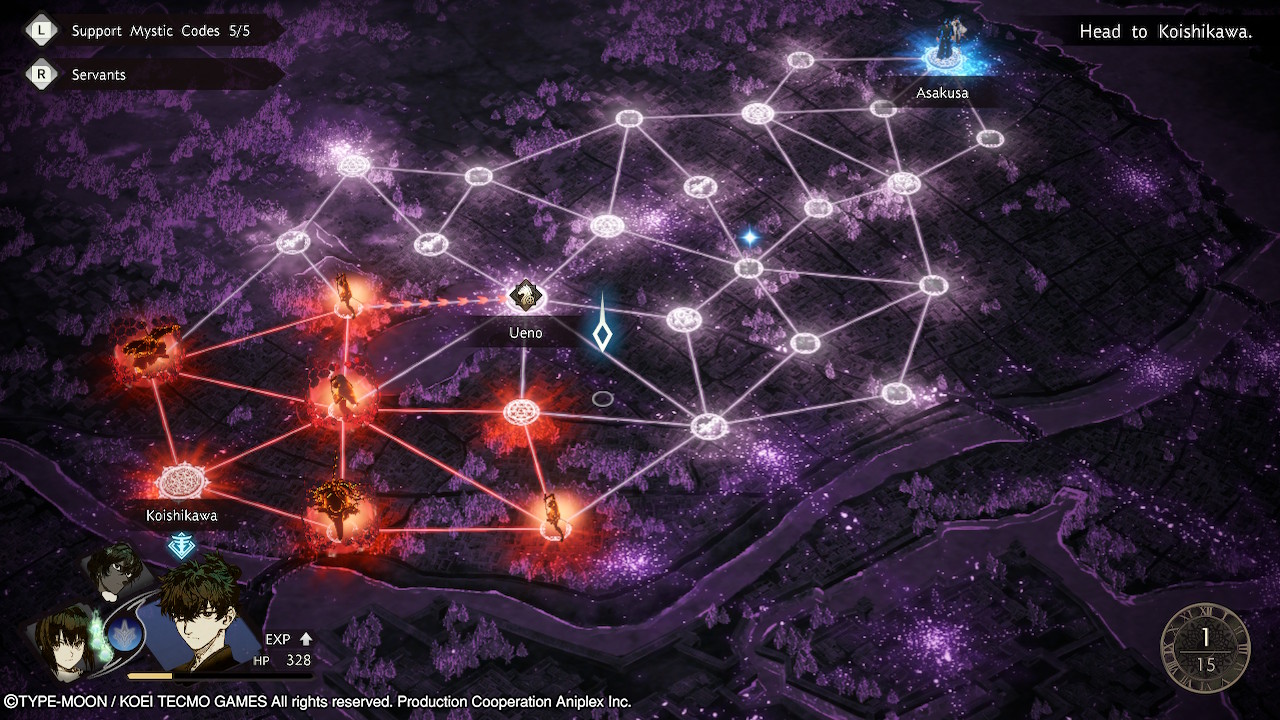There can be only one (pair).
I came into Fate/Samurai Remnant not as a fan of the Fate series, but as a fan of Omega Force’s Musou games. Warriors Orochi on the Wii U, Samurai Warriors: Chronicles on the 3DS, the various Fire Emblem and Legend of Zelda tie-ins on the Switch—I’ve played and enjoyed a lot of these games. Fate/Samurai Remnant shares some of the same mechanics, but it differs in ways that may make it an attractive option for those put off by the typical “1 against 1,000” Musou gameplay.
True to the series’ source material, Fate/Samurai Remnant thrusts players into the Holy Grail War. This is Highlander-esque “tournament” in which seven pairs of Masters and Servants must battle until one pair remains. “There can be only one,” it’s been said. Miyamoto Iori, the adopted son of the legendary swordsman Miyamoto Musashi, finds himself in this struggle alongside the servant Saber. To survive, Iori will have to master the sword (and magic), forge alliances, and learn more of the Holy Grail War and its Waxing Moon Ritual.
The setup is great, offering plenty of room for character development, narrative revelations, and those big anime battles where all seems lost until reinforcements arrive in the nick of time. Who can be trusted? Who’s worth allying with even if they can’t be trusted? It’s all a bit complicated to follow, honestly, but it makes for a fun narrative arc.
The entirety of the game takes place in numerous towns across Edo in mid-17th century Japan, and Fate/Samurai Remnant has done the best job of city-building since maybe Ruli City from The Last Story on the Wii. Exploring the numerous and richly detailed towns is a lot of fun when you first enter, and you’re rewarded for finding items and completing tasks as you do. You can even pet the cats and dogs, which is a thing these days for some reason. However, the Switch does have some difficulty rendering all of these locations and activities; there’s a lot of stuttering as you work your way through alleyways and town squares.
Of course, towns aren’t just for shopping and retrieving lost items. They’re also for combat, and that’s where the Musou action kicks in. Kind of. There are far fewer battles than fans may expect, and they’re against fewer enemies. The majority of them feel like the officer battles in the Warriors games; there are one or two difficult enemies to take out, surrounded by a dozen or so grunts. Combat is mostly handled via a chain of Y and X attacks. The A button launches a more powerful attack when you’ve filled up its gauge. You know the routine.
Until you don’t. Some enemies here will build up powerful attacks that you have to disrupt with a well-timed X attack. If you’re stuck in a chain, you won’t have time to launch it. You also have special attacks (or buffs) that you can launch by holding the R button and selecting from the four skills you’ve acquired and selected. These also are gauge based, with the more powerful options depleting more of the gauge. You can replenish them with normal attacks or by consuming the right items if you have them. And actually, because you can pause the battles to replenish health with items, it’s fairly easy to win even if you’re not terribly efficient at combat.
Finally, your servant can launch special attacks with the L button, and you can even let her (or him) take over the fight for a bit to unleash some really amazing damage. Managing all of this is key to battle efficiency, with numerous factors coming into play. For example, most bosses have a defensive layer that prevents damage from normal attacks. Do you waste your servant’s attacks to crack that defense, or do you chip away at it with your special skills, unleashing your servant to finish the bosses off only after their defenses are gone.
Iori also has different stances to learn and consider. Water is good for attacks against hordes of enemies. Earth is better for defense against a single powerful enemy. Wind incorporates magic into the attacks and is useful against monsters. Fire and Void are great for low and high health, respectively, once you acquire them. Each of these attacks (along with standard stats such as defense, health, attack, magic, etc.) can be leveled up through skill trees for Iori and the various servants.
It’s a lot to manage, but we’re not nearly done.
Iorio’s home base can be leveled up, too, providing access to different abilities and power-ups. The weapons you acquire can be enhanced or broken down for materials to be put to use elsewhere. You can play mini-games that temporarily improve your stats or provide rare materials. The story returns you home with frequency, so it’s always wise to take advantage of these boosts when you can. Of course, weapon and skill tree improvements can be made from pretty much anywhere.
The game loop basically moves you from town to town for exposition, exploration, fetch quests, and combat. Combat areas are marked by red circles, so you can take advantage of them to improve your skills and stats. Every now and again you’ll get a major boss battle with important plot movement. In between, unfortunately, things become as repetitive as in a standard Musou game…until you hit a leyline.
When a new area is to be unveiled, you need to remove the negative energy from it by connecting Leylines on the Spiritual Lands Map in a turn-based board game fashion. Your “piece” moves node by node, but the enemies are doing the same to break the chain between you and your base. You have a certain number of moves to reach the goal, and the rules or conditions will often change as you progress. New enemies arrive, new paths are discovered, etc. You do get some abilities to help, such as sending your servant back to prevent the enemy from reaching your base, delaying the move counter so you don’t run out of turns, or relying on the special abilities of any rogue servants you’ve acquired.
I initially liked this shift in gameplay and tone. As the Leylines got more complex, however, they started to get in the way, breaking any momentum the game was building. If you just drop me in a town after a long gameplay session, I’m always compelled to explore that town. Present me with a Leyline puzzle, however, and that meant closing-time.
So, how you’ll feel about Fate/Samurai Remnant will largely depend upon your overall view of Omega Force’s Musou games. If you love the feel of the visceral, constant combat, you likely won’t enjoy this game’s deliberate pacing and long gaps with little action. If, however, you enjoy your fighting to be evenly mixed with quest solving and puzzle elements, then Fate/Samurai Remnant will be one of the better games you’ve played this year—and well into the next with the available Expansion Pass.
Review: Fate/Samurai Remnant (Nintendo Switch)
Very Good
Fate/Samurai Remnant is a Musou game for players who just can’t get into Musou combat. By relying more on narrative, puzzles, and RPG stat building, it certainly has a broader reach for action gamers. The new formula still becomes repetitive, however, and performance issues on the Switch may start to nag after a while.

